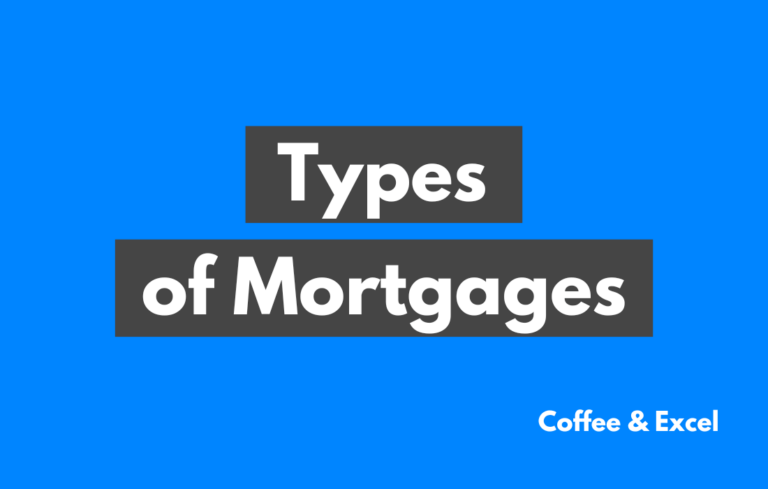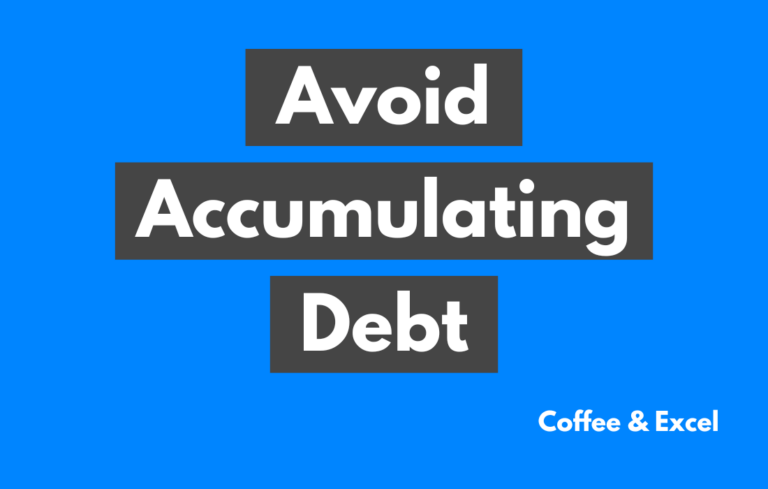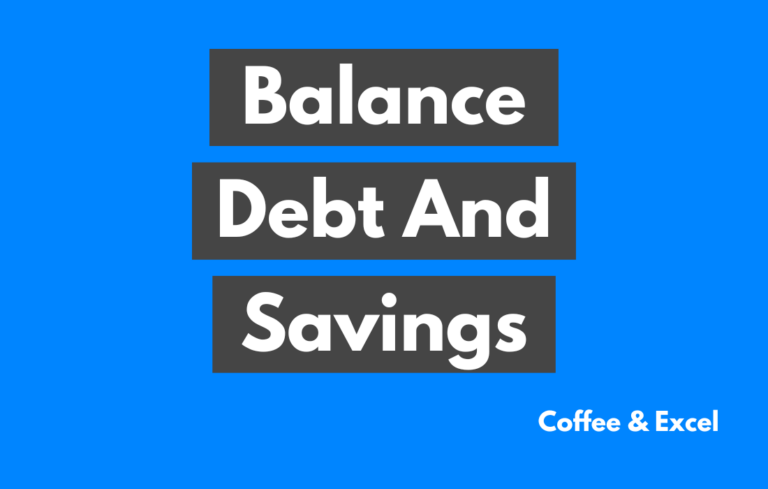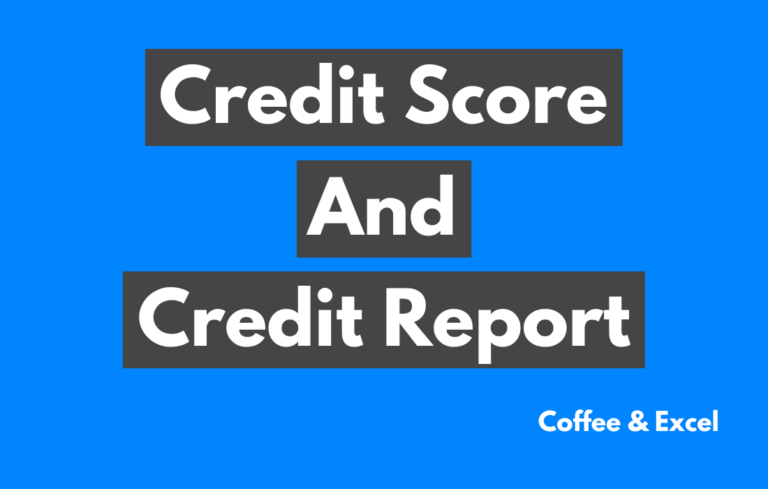7 Essential Debt Management Strategies for Financial Freedom

Introduction to Debt Management Strategies
Managing finances effectively has become more crucial than ever in today’s fast-paced world. As consumer debt continues to soar, many find themselves trapped in a cycle of accumulating liabilities. However, proper debt management makes breaking free from this cycle possible. In this guide, we’ll delve deep into the realm of debt management, offering actionable strategies to help you regain control of your financial future.
TL;DR
Understanding Debt: Recognize the types and implications of debt for both financial and mental well-being.
Budgeting: Create and stick to a budget to monitor and control spending.
Debt Strategies: Choose between Debt Snowball (paying the smallest debts first) and Debt Avalanche (targeting the highest interest rates first) methods.
Negotiation: Communicate with creditors for possible revised payment plans or reduced interest rates.
Prevention Tips: Live within your means, build an emergency fund, avoid unnecessary expenses, and anticipate and save for foreseeable expenses
End Goal: With persistence and the right strategies, achieving a debt-free life is possible.
Why is Debt Management Important?
Firstly, let’s address the elephant in the room. Why should you even bother about managing your debt? Unchecked debt doesn’t just strain your wallet; it also takes a toll on your mental well-being. Every unpaid bill or looming credit card statement can lead to sleepless nights and rising stress levels. Moreover, with the increasing cost of living, it’s easy to fall into the trap of borrowing more than one can repay. Hence, mastering debt management strategies becomes a financial necessity and a means to ensure peace of mind.
The Rising Tide of Consumer Debt
Recent statistics paint a concerning picture. Consumer debt, encompassing everything from credit card balances to personal loans, has witnessed a sharp uptick in the past decade. This trend underscores the urgency to equip oneself with the knowledge and tools to navigate the murky waters of debt.
Understanding Debt: More Than Just Numbers
Navigating the financial landscape requires a clear understanding of debt. It’s not just about owing money; it’s about understanding the nuances that come with different types of liabilities. By grasping the essentials, you can make informed decisions and set the stage for effective debt management.
Defining Debt: What Exactly Is It?
At its core, debt is money borrowed by one party from another. Typically, the borrower receives a certain amount of money and agrees to repay it, often with interest, within a specified period. For instance, when Jane takes out a $10,000 personal loan at a 5% interest rate, she’s in debt. She’s obligated to repay the $10,000 plus the accrued interest.
Diving into Debt Types: Secured vs. Unsecured
Broadly speaking, debts can be categorized into two main types:
- Secured Debt: This type of debt is backed by an asset or collateral. If the borrower defaults, the lender can claim the asset to recover their money. A classic example is a mortgage. If you buy a house with a bank loan and fail to make the payments, the bank can seize the house.
- Unsecured Debt: The debt isn’t tied to any specific asset. Instead, it’s based on the borrower’s creditworthiness. Credit cards are a prime example. If you rack up a hefty bill on your card and can’t pay it off, the credit card company can’t directly take your possessions. However, they can take legal actions, impact your credit score, or employ collection agencies.
The Impact of Accumulating Debt
Beyond the financial implications, accumulating debt can have profound psychological effects. Imagine the constant worry of juggling multiple credit card bills or the stress of a looming mortgage payment. Over time, these concerns can lead to anxiety, depression, and strained relationships. Financially, unchecked debt can lead to higher interest rates, reduced credit scores, and limited access to future credit. It’s a slippery slope, but you can avoid these pitfalls with awareness and proactive measures.
The Basics of Debt Management: Charting a Path to Financial Freedom
Embarking on a journey to manage and eventually eliminate debt requires a foundational understanding of debt management. It’s not just about paying off what you owe; it’s about strategically planning your repayments to minimize costs and maximize benefits. Let’s dive into the essentials.
What is Debt Management, Anyway?
In simple terms, debt management is the process of handling, organizing, and repaying owed money in a way that aligns with one’s financial capabilities. Think of it as a roadmap. If you’re on a cross-country trip, you wouldn’t just drive aimlessly; you’d plan your route, stops, and destination. Similarly, with debt management, you’re plotting a course to financial solvency. For example, Mark, burdened with multiple credit card debts, might consolidate them into one monthly payment with a lower interest rate, making it easier to track and repay.
Debt Management vs. Debt Settlement: Clearing the Air
It’s crucial to distinguish between these two often-confused terms:
- Debt Management: As we’ve discussed, this involves creating a plan to repay your debts, often by restructuring or consolidating them. It’s about working within the system to find the best way to clear your dues.
- Debt Settlement: This is a more aggressive approach. Here, you or a company you hire negotiates with your creditors to settle for a reduced amount than what’s owed. For instance, if Sarah owes $20,000, she might negotiate to pay just $12,000 as a full and final settlement. While this might sound appealing, it can significantly impact your credit score and may come with tax implications.
The Perks of Effective Debt Management
When done right, debt management can offer a plethora of benefits:
- Reduced Stress: Knowing there’s a plan in place can alleviate the mental burden of debt.
- Financial Savings: By consolidating debts or securing lower interest rates, you can save a significant amount over time.
- Improved Credit Score: Timely and consistent repayments reflect positively on your credit history.
- Avoiding Severe Measures: Effective management can prevent the need for drastic actions like bankruptcy.
In essence, mastering the basics of debt management is akin to equipping yourself with a financial compass, guiding you away from the storms of debt and towards the calm shores of financial stability.
Top Debt Management Strategies: Your Roadmap to Financial Stability
Understanding debt is one thing, but actively managing it requires a set of proven strategies. When applied correctly, these approaches can transform overwhelming debt into manageable monthly payments, leading you toward a debt-free future. Let’s explore these strategies in detail.
1. Budgeting: The Cornerstone of Financial Planning
Before diving into complex strategies, it’s essential to start with the basics: budgeting. Creating a budget allows you to see where your money goes, helping you allocate funds effectively.
- Example: Lisa earns $4,000 a month. By creating a detailed budget, she realizes she spends $500 on dining out. By cutting it down to $250, she can allocate the saved $250 toward her credit card debt.
- Tools and Apps: In today’s digital age, numerous apps like Mint, YNAB (You Need A Budget), and PocketGuard can assist in tracking expenses and setting budgetary limits.
2. Debt Snowball vs. Debt Avalanche Methods: Picking Your Path
Both these methods focus on systematically paying off debts, but they prioritize differently:
- Debt Snowball: Start by paying off the smallest debt while making minimum payments on larger ones. Once the smallest is cleared, move to the next smallest. This method provides quick wins, boosting motivation. If you have debts of $500, $2,000, and $5,000, first clear the $500 debt, then the $2,000, and finally the $5,000.
- Debt Avalanche: Prioritize debts with the highest interest rates, regardless of the amount. This method saves more money in the long run. If there are two debts, one of $1,000 at 10% interest and another of $2,000 at 5%, tackle the $1,000 debt first due to its higher interest.
3. Debt Consolidation: Streamlining Your Payments
Debt consolidation involves combining multiple debts into a single loan, often with a lower interest rate. This simplifies repayments and can save money. If you have three credit cards with varying interest rates. By taking a consolidation loan at a lower fixed rate, you can pay off all three cards and then focus on repaying just one loan.
While an appealing solution to your problems, this approach can often lead to more problems than it solves, as we shall see later.
4. Negotiating with Creditors: The Power of Communication
Sometimes, directly communicating with creditors can lead to revised payment plans or reduced interest rates.
If you lose your job, explain the situation to your credit card company. They might temporarily agree to lower the interest rate, giving you breathing room to find new employment. But if you don’t ask, you’ll continue to suffer, potentially unnecessarily.
5. Seeking Professional Help: When to Call in the Experts
If debts become too overwhelming, consider seeking advice from credit counseling agencies. They can provide personalized plans and even negotiate with creditors on your behalf.
If you approach a credit counseling agency after struggling with mounting medical bills. They help you set up a debt management plan, reducing your monthly payments and interest rates.
Incorporating these strategies into your financial routine can pave the way to a more secure financial future. Remember, the journey to becoming debt-free is a marathon, not a sprint. With persistence, dedication, and the right strategies, you can cross the finish line with your financial flag held high.
Tips to Avoid Accumulating More Debt: Building a Sustainable Financial Future
While managing and reducing existing debt is vital, adopting habits that prevent further accumulation is equally crucial. After all, what’s the point of diligently paying off debt if you’re just going to rack up more? Integrating these proactive strategies into your daily life can fortify your financial defenses and pave the way for lasting stability.
1. Living Within Your Means: The Golden Rule
It sounds straightforward, yet many overlook this fundamental principle. Spending more than you earn is a surefire way to accumulate debt.
If Tom earns $3,000 a month, he should aim to keep his monthly expenses below this threshold. This might mean opting for a more affordable apartment or cutting back on luxury purchases.
2. The Importance of an Emergency Fund: Your Financial Safety Net
Unexpected expenses, from medical emergencies to car repairs, can quickly derail your budget. Setting aside money in an emergency fund allows you to handle these unforeseen costs without debt.
- Example: Clara sets aside $100 every month in a separate savings account. When her refrigerator suddenly breaks, she can dip into this fund instead of using her credit card.
3. Avoiding Unnecessary Expenses: The Art of Mindful Spending
Impulse purchases and non-essential expenses can add up over time. By being mindful of where your money goes, you can make more informed spending decisions. Make your own at home instead of buying a daily $5 coffee. Over a year, this simple change saves you over $1,800.
4. Regular Financial Check-ins: Keeping Yourself Accountable
Regularly reviewing your finances can help you identify potential issues before they escalate. This might mean checking your bank statements, setting monthly budget meetings, or using financial tracking apps.
- Example: Every month, Mia sits down to review her expenses. She notices a subscription she no longer uses and cancels it, saving herself $15 a month.
5. Matching Loan Life to Asset Life: A Balanced Approach
When taking out a loan, it’s essential to consider the lifespan of what you’re financing. Ideally, the life of the loan shouldn’t exceed the life of the asset or purpose it’s used for.
- Example: If Peter takes out a 7-year loan to buy a car he plans to use for only 5 years, he’ll still be making payments on the car long after he stops using it. Instead, he should aim for a loan term that aligns with the expected usage period of the car.
6. Anticipating Expenses: The Proactive Savings Strategy
Life is full of predictable expenses, from annual insurance premiums to holiday gifts. Instead of being caught off-guard, start saving in advance. Setting aside a little each month allows you to spread out the cost and avoid debt.
Knowing that your car insurance premium of $600 is due every December, start saving $50 each month starting in January. By the time December rolls around, you have the full amount ready without any financial strain.
Incorporating these tips into your financial routine can act as a bulwark against accumulating more debt. Remember, the key to lasting financial health isn’t just about managing debt—it’s about cultivating habits that prevent it in the first place. With diligence and foresight, you can build a future free from the shackles of overwhelming debt.
The Hidden Dangers of Debt Consolidation: A Lesson from History
Debt consolidation, while often touted as a silver bullet for financial woes, comes with its own set of pitfalls. One of the most significant risks arises when short-term debts are transformed into long-term obligations. This can have dire consequences, as evidenced by the 2008-2009 financial crisis.
The Peril of Mortgaging Today’s Pleasures for Tomorrow’s Burden
It’s tempting to use long-term assets, like your home, to consolidate and pay off short-term debts. However, this can be a treacherous path.
- Example: Imagine you’ve accumulated $20,000 in credit card debt from various expenses, including a lavish holiday. To clear this, you decide to remortgage your home. While this might offer immediate relief, you’ve essentially stretched a short-term debt (the holiday expense) over a 20 or 30-year mortgage term. In the long run, you’ll pay significantly more interest, and the holiday that once brought joy now becomes a decades-long financial burden.
Echoes from the 2008-2009 Financial Crisis
The dangers of inappropriate debt consolidation became painfully evident during the 2008-2009 financial meltdown. Many homeowners, lured by the appeal of easy refinancing options, borrowed against their homes to finance lifestyles beyond their means.
An All To Common Story: In the lead-up to the crisis, “John”, like many others, took advantage of rising home values to refinance his mortgage, extracting cash to pay off credit cards, buy a new car, and even fund a vacation. However, when property values plummeted, he found himself owing more than his home was worth. With the economic downturn, John lost his job and struggled with mortgage payments, eventually facing foreclosure. This story was, unfortunately, all too common, leading to a cascade of foreclosures and the subsequent financial crisis.
Proceed with Caution
While debt consolidation can be a valuable tool, it’s essential to use it judiciously. Converting short-term, unsecured debt into long-term, secured obligations can jeopardize your most valuable assets. Always consider the long-term implications and ensure that the consolidation truly aligns with your financial goals.
By understanding the potential pitfalls of debt consolidation and learning from past mistakes, you can make informed decisions that safeguard your financial future. Remember, the allure of immediate relief should never overshadow the potential long-term consequences.
Conclusion: Embracing a Debt-Free Horizon
Navigating the intricate maze of debt can often feel daunting. Yet, as we’ve explored throughout this guide, armed with the right strategies and a proactive mindset, anyone can chart a course toward financial freedom.
The Power of Informed Choices
Every financial decision, no matter how small, has the potential to shape your financial future. Opting to brew your coffee instead of that daily café visit, or choosing a loan term that aligns with an asset’s lifespan, can ripple effects on your financial health.
For Example, By redirecting the $5 daily coffee expense into savings over a decade, you could accumulate over $18,000 (excluding any potential interest earned)!
The Journey Ahead
While the path to a debt-free life might be filled with challenges and temptations, the rewards of peace of mind, financial stability, and the freedom to pursue your dreams without the shadow of debt are well worth the effort.
Taking the First Step
The journey of a thousand miles begins with a single step. Whether you’re deep in debt or just starting to feel the pinch, remember that every step you take toward managing and reducing your debt brings you closer to your financial goals.
In wrapping up, it’s essential to recognize that debt management isn’t just about numbers; it’s about empowering yourself to live a life unburdened by financial constraints. With the strategies and insights shared in this guide, you’re well-equipped to embark on your journey toward a brighter, debt-free future. Remember, the power to change your financial destiny lies in your hands. Embrace it.
Frequently Asked Questions (FAQ) about Debt Management
- What is the difference between debt management and debt settlement? Debt management involves creating a structured plan to repay your debts, often by consolidating or restructuring them. On the other hand, debt settlement is a more aggressive approach where you or a company negotiates with creditors to pay a reduced amount than what’s owed.
- How can I decide between the Debt Snowball and Debt Avalanche methods? The choice depends on your personal preference. If you’re motivated by quick wins, the Debt Snowball method, which focuses on paying off the smallest debts first, might be for you. If you want to save on interest in the long run, the Debt Avalanche method, which targets debts with the highest interest rates first, would be more suitable.
- Are there any downsides to debt consolidation? While debt consolidation can simplify repayments and potentially reduce interest rates, it’s essential to be cautious. Consolidating debt might extend the loan term, leading to more interest paid over time. Additionally, if you use a secured loan to consolidate, you risk losing the asset (like your home) if you default.
- How much should I save in an emergency fund? A common recommendation is to save three to six months of living expenses in an emergency fund. However, the exact amount can vary based on individual circumstances and comfort levels.
- How can I avoid impulse purchases? Mindful spending is key. Before making a purchase, ask yourself if it’s a need or a want. Waiting 24 hours before buying can also help reduce impulse spending. Using budgeting apps or setting spending limits can further assist in keeping your expenses in check.
- Is seeking professional help for debt management a good idea? If you’re overwhelmed by debt and unsure of the best strategies to tackle it, seeking advice from a reputable credit counseling agency can be beneficial. They can provide personalized plans and financial education and even negotiate with creditors on your behalf.
- How long does it take to become debt-free using these strategies? The timeline varies based on individual circumstances, such as the total amount of debt, income, and how aggressively one follows the strategies. However, many people see significant progress within a few years with consistent effort and the right approach.





